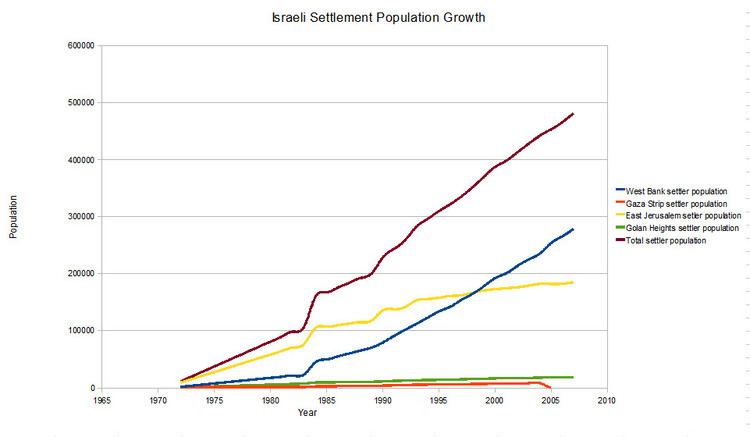 | ||
This is a timeline of the development of and controversy over Israeli settlements.
Contents
1967
1972
1975
1977
1978
August
March
1980
December
1983
1985
1989
1990
1991
1992
1993
1994
1995
1996
1997
1998
1999
2000
September
2001
2002
2003
April
2004
2005
March
August
2006
2007
November
December
2008
March
November
December
January
June
August
September
November
December
March
February
References
Israeli settlement timeline Wikipedia(Text) CC BY-SA
